
Pip Wizardry 2020!


Calculating Damage Per Pip
This can be represented by the formula: (damage)/(x-y).
Here you would take the spell’s average damage (based upon the values on the card), and divide it by the difference of its Pip cost (represented by the letter x) and its utility Pip cost (represented by the letter y) which we’ll get to in a moment.
So the math for Storm Owl would look like this:
(damage)/(x-y)
(1400)/(10-0)
1400/10
= 140
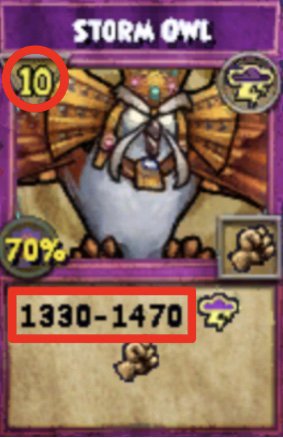
What Are Pip Reductions?
A Pip reduction is something factored into a spell’s DPP calculation. These reductions happen when a spell has an added effect or utility attached to it. When calculating DPP, some Pips may get subtracted.
For example, one type of Pip reduction is the scion condition. Scion spells cost 11 pips, and do x2 damage if a particular condition is met depending on the spell. Because Scion spells can do x2 damage, reducing their initial damage. Their base damage is around the damage of a ten Pip spell. See where I’m going with this?
The Scion Condition results in -1 Pip when calculating damage per pip. Yet, the Scion condition is not the only Pip reduction. There are, in fact, many more.
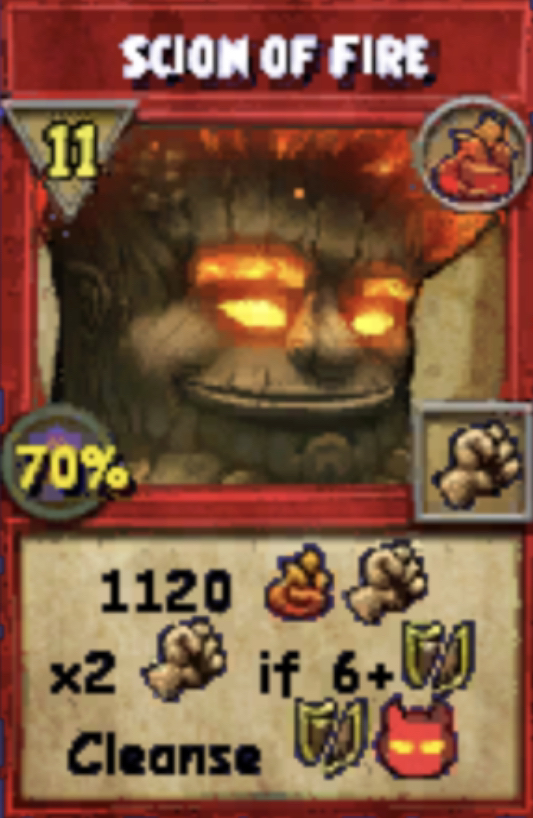
Types of Pip Reduction
The following list contains the types of Pip reductions along with how many Pips they reduce.
- Special: 10% Pierce blade: -0 Pips
- Rusulka’s Wrath blade/weakness: -0.5 Pips
- 800 Absorb: -1 Pip
- Disarm: -1 Pip
- Guiding Light: -1 Pip
- Infection: -1 Pip
- Pierce: -1 Pip
- Remove 2 pips: -1 Pip
- Scion Condition: -1 Pip
- Steal 1 pip: -1 Pip
- Stun: -1 Pip
- Summon minion: -1 Pip
- Trap: -1 Pip
- Tower shield: -1 Pip
- Bubble change: -2 Pips
- Double Disarm: -2 Pips
- Double stun: -2 Pips
- Gain 1 pip: -2 Pips
- Plague: -2 Pips
- Pierce before hit: -2 Pips
- Smokescreen (40% accuracy debuff to all enemies): -2 Pips
- Spirit Shield + Elemental Shield: -2 Pips
- Stun all: -2 Pips
- 45% Weakness: -2 Pips
- AOE 45% Weakness -3 Pips


What This Means
These Pip reductions may NOT all be accurate, because determining the number of Pips a utility takes away is tricky. KI developer Mattnetic has said some utilities may cost less and others more. The issue is finding out which ones. Most pip reductions appear to be -1 one Pip, with AOE utilities such as Plague counting as -2. One for the utility, and one for the AOE effect. However, that still leave some loose ends, so allow me to to tie those up right now.
Because all King Artorius spells to get a 10% Pierce charm, the Pierce charm is not counted as a utility. Thus, every King Artorius spell gets it for free.
Rusalka’s Wrath gives either a 30% storm blade or a 30% Storm Weakness to the caster. Considering it has a chance to positively and negatively affect the caster, it was given 0.5 pips instead of 1.
Because the typical bubble would cost two pips, the Pip reduction is counted as two Pips.
Calculating the Pip reduction for an 800 Absorb was difficult. The actual Absorb spell is three pips for a 400 Absorb; therefore, wouldn’t it be counted as six Pips for an 800 Absorb? If so, then the DPP of Hungry Caterpillar would be extremely high. But that wouldn’t be, right? Would it? These things can be quite challenging.
What Are Damage Multipliers?
You factor in a damage multiplier after you calculate a Pip reduction. For example, a standard damage multiplier is an AOE, or area of effect. An AOE spell is when a spell hits all enemies. Let’s take the spell, Glowbug Squall. This spell is an AOE, and it does 940 damage to all enemies. It costs five regular Pips and one shadow Pip. A Shadow Pip currently equals 3.6 Pips; therefore, Glowbug Squall would be 8.6 Pips in total.
AOE spells have their damage multiplied by 0.75, or 3/4. To account for this spell being an AOE, we get the inverse of 3/4 and multiply by 4/3. Instead of dividing 940 by 8.6, we would multiply 940 by 4/3 first to get 1253.3. Now, we divide by 8.6. Finally, this makes the DPP of the spell Glowbug Squall 145.7.
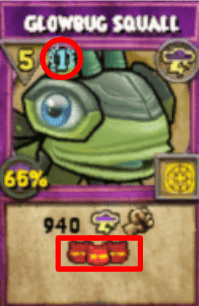
Calculating Drain DPP
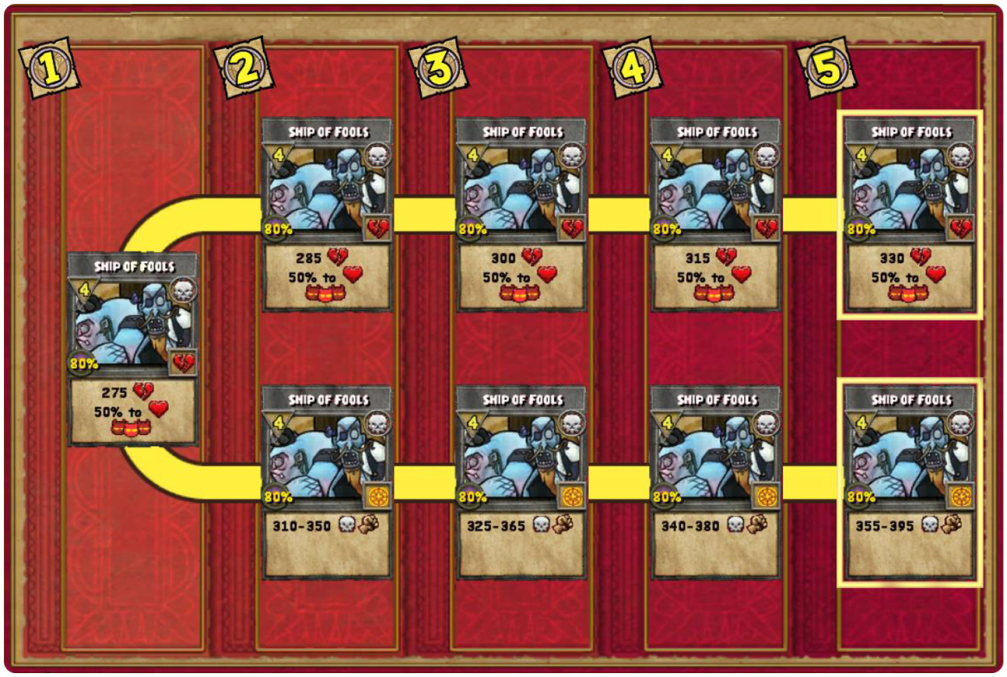
Calculating DOT DPP
One more type of damage multiplier is “damage over time” or DOT. These spells have initial damage, and then the damage dealt over three rounds. Because this damage takes longer to deal, the damage is 25% higher than the average spell—DOT’s damage multiplies by 1.25. So, to find DPP of spells with DOT’s divide by 1.25 to get the final DPP value.
X rank spells like Tempest and Snowball Barrage are not affected by the AOE multiplier. Because they already have their damage per Pip value listed on the card.
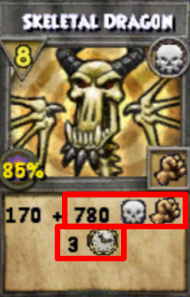
What do the Devs say?
The first chart here is from Ratbeard’s Dev Dairy, it shows the individual base DPP for each school of magic. In addition to the new and old DPP for each school’s Shadow-enhanced spells.
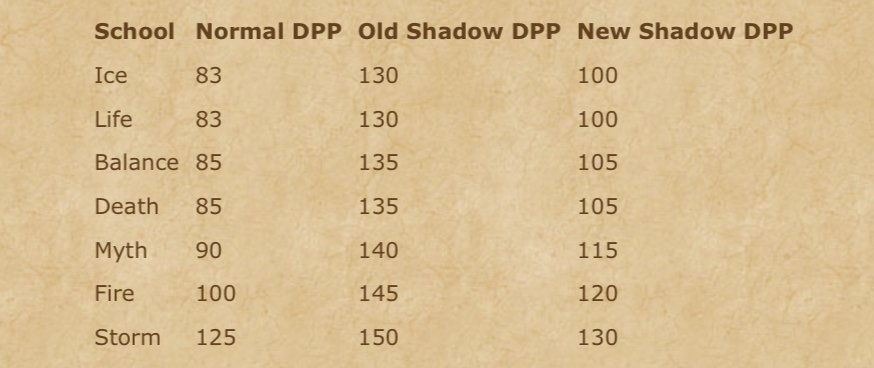
With the damage per pip chart below, you will start to notice things with some spells above rank 7. The damage per pip curve caps off at eight Pips. It does not increase further. To account for this, rank eight spells and above get utility for cheaper then what a rank seven or lower would. They get these utilities at a 50% discount, compared to a rank seven or below spell.
There is one utility that does not get this discount, the Scion Condition, which remains at -1 Pip, not -0.5. The discounted utilities are bolded on the chart.
Another thing to note is rank seven spells DO NOT get penalized for being an AOE. They are purposefully over the damage curve. None of the things mentioned above apply to Shadow enhanced spells.
Formulas: (x = number of Pips and y = utility Pip cost)
AOE: [(damage)(4/3)] / (x – y)
DOT: [(damage)(0.8)] / (x – y)
Drain: [(damage)(25/22)] / (x – y)
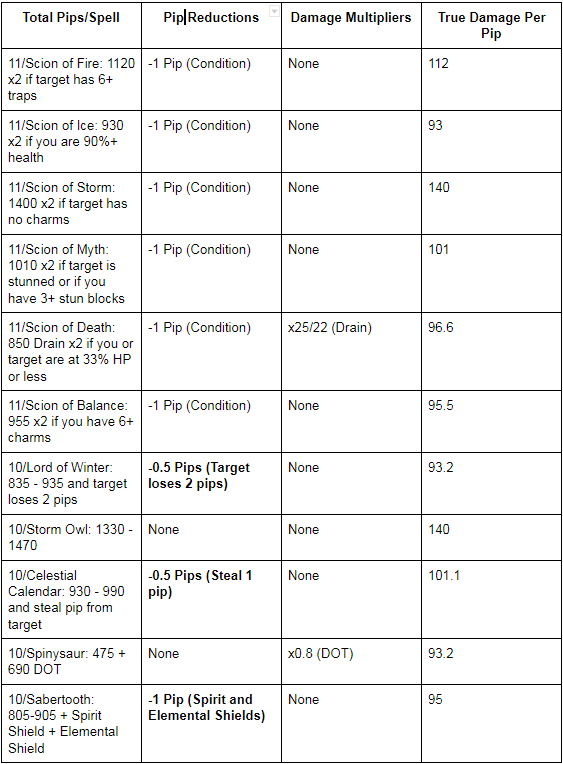
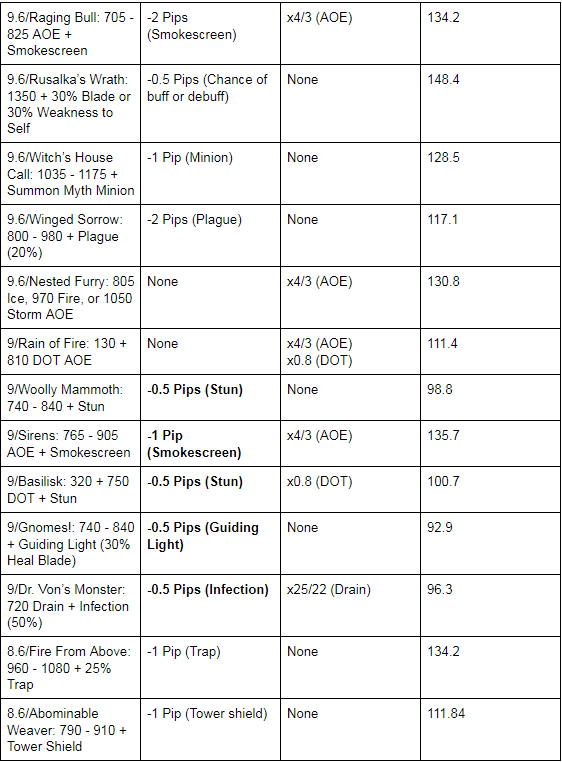

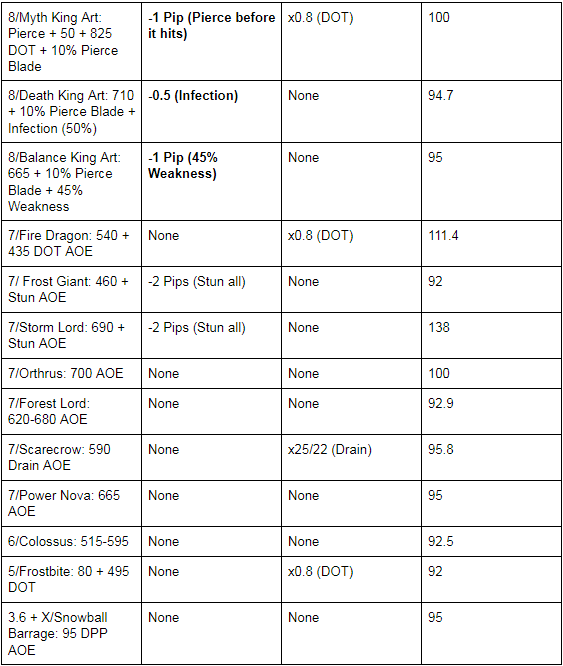
If you’re interested in learning more about DPP you can check out Ratbeard’s Dev Dairy on the subject with this link! https://www.wizard101.com/game/dev-diary/spell-balance-audit
Final Notes
Moving forward the it’s important to keep this information in mind:
- One Shadow Pip equals 3.6 pips
- Storm base DPP is 125
- Fire base DPP is 100
- Myth base DPP is 90
- Death and Balance base DPP is 85
- Life and Ice base DPP is 83
- DOTs have a damage multiplier of 1.25
- Rank 7 spells are intentionally above the curve in DPP (no x4/3 AOE multiplier when calculating DPP)
- DPP scales slowly as spells start to cost more Pips
- Shadow enhanced spells have a higher DPP compared to regular spells.
We hope this article helps you to understand the logic behind the recent changes to the game and how they will help balance things going forward. Personally, I am excited to see what new spells will be possible now.


